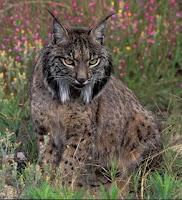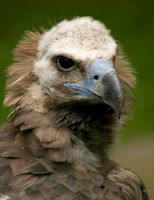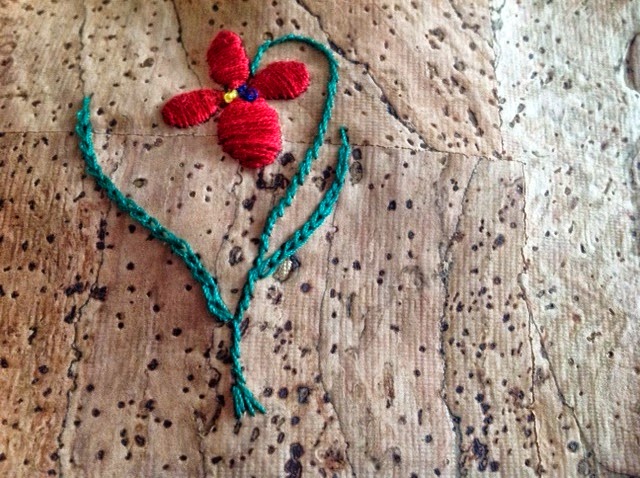“Conscience for a living planet”
WHY ARE CORK OAK LANDSCAPES IMPORTANT?
Cork oak landscapes have
proven biodiversity, environmental and ecological values.
These landscapes are one of the best examples
in the Mediterranean for balancing conservation and development for the benefit
of people and nature. They sustain rich biodiversity and traditional
livelihoods, provide opportunities for development in economically and socially
disadvantaged areas, and play a key role
in ecological processes, such as water retention, soil conservation or carbon
storage. (Montero and Torres, 1993).
Biodiversity values
The Mediterranean is one of the 25 global ‘hot spots’, characterized by a high level of species diversity.
The Mediterranean is one of the 25 global ‘hot spots’, characterized by a high level of species diversity.
In cork oak landscapes, plant diversity can
reach a level of 135 species per square meter, and many of these species have
aromatic, culinary or medicinal uses. Animal diversity is also high. Cork oak
landscapes are important for the most charismatic and threatened species in the
Mediterranean and a large number of migratory and wintering birds from Northern
Europe, including virtually the entire European population of common cranes.
They also contain a rich diversity of fauna, including endemic spiders, spade
foot toads, geckos, skinks, vipers, mongoose, wild cats, roe deer, boars,
Barbary deer and genets.
Cork oak landscapes are particularly well
adapted to the harsh Mediterranean climate and soil conditions, supporting high
biodiversity levels and sustainable economic activities (WWF MedPO and ERENA.)
This makes their maintenance and protection crucial, and means that
biodiversity conservation cannot be separated from economic and social
development (Birot, 2005).
Key examples of
threatened species found in the Mediterranean cork oak landscapes:
Fewer than 100 (not counting cubs of the
year)
The Iberian lynx has recently gone from the critically endangered species;[1] to the endangered species;[1] thanks to reintroductions and other conservation actions.
The Iberian lynx has recently gone from the critically endangered species;[1] to the endangered species;[1] thanks to reintroductions and other conservation actions.
150 breeding pairs
The species is
classified as Vulnerable by IUCN.[1] Threats include loss of habitat, human encroachment, collisions with pylons, and illegal poisoning. There has also been a
decline in the rabbit populations, as a result of myxomatosis and other viral illnesses.
Found only in North West Tunisia and North East Algeria. No available estimate of number of individuals.
Black
Vulture (also known as Cinereous Vulture) (Aegypius monachus )
1,050-1,150 breeding pairs in Spain (based on Tucker & Heath
(1994); 800 breeding pairs in Spain (based on Castro & al, 1997)
Near Threatened (IUCN 3.1)[1]; They no longer nest in Israel. More recently, protection and deliberate feeding schemes have
allowed some local recoveries in numbers, particularly in Spain.
A total estimate for Spain of 350-400 breeding pairs
This is a shy and wary species, unlike the
closely related white stork. It is seen in pairs or small flocks—in marshy areas, rivers or
inland waters. The black stork feeds on amphibians and insects.
Forests and woodlands play a vital role in protecting the environment. This is particularly true of steeply sloping watersheds where tree roots bind the soil and protect it from erosion and landslides. Uncontrolled forest clearance in upland areas can have major repercussions further downstream.
Water protection
Eroded soil may be carried by streams and rivers and deposited in reservoirs linked to irrigation and hydro-electricity projects, thus reducing the capacity and shortening the life of these costly investments. Carbon sequestration and energy conservation
Cork oak landscapes also contribute to store carbon, reducing greenhouse gases in the atmosphere.
Eroded soil may be carried by streams and rivers and deposited in reservoirs linked to irrigation and hydro-electricity projects, thus reducing the capacity and shortening the life of these costly investments. Carbon sequestration and energy conservation
Cork oak landscapes also contribute to store carbon, reducing greenhouse gases in the atmosphere.
A natural resource, renewable, biodegradable and recyclable
• Natural cork is an environmentally-friendly material that completely biodegrades or can be readily recycled without creating any significant secondary waste.
• After use as a stopper, the cork bio-degrades without producing toxic residues or may be recycled into other products.
THREATS TO THE CORK OAK LANDSCAPES
Cork oak landscapes now face a number of inter-related threats that put their sustainability at risk, including increasing human pressure on natural resources such as forest clearance for agricultural and other land uses, forest abandonment (particularly in the Northern Mediterranean), poor forest management practices, forest fires, changing climatic conditions, and associated diseases, as well as overgrazing. Many of these threats are caused by economic factors, often driven by policies and markets. One major threat comes from the increasing risk of decline in the global cork market, due to the growing use of cork stopper substitutes, which threatens to reduce the market value of cork, and thus the incentive to preserve and manage cork oak forests.
Cork oak landscapes now face a number of inter-related threats that put their sustainability at risk, including increasing human pressure on natural resources such as forest clearance for agricultural and other land uses, forest abandonment (particularly in the Northern Mediterranean), poor forest management practices, forest fires, changing climatic conditions, and associated diseases, as well as overgrazing. Many of these threats are caused by economic factors, often driven by policies and markets. One major threat comes from the increasing risk of decline in the global cork market, due to the growing use of cork stopper substitutes, which threatens to reduce the market value of cork, and thus the incentive to preserve and manage cork oak forests.
The
likely consequences of a decline in the cork stoppers market on the cork oak
landscapes.
This report shows that changes in the cork
stoppers market pose a major threat to the cork oak forests conservation.
Projections used in this report suggest that
unless current market trends are reversed, we may see accelerated loss and
degradation to cork oak landscapes, which will be extremely hard to reverse.
This is because the survival of these cork oak
landscapes is strongly linked to the maintenance of the market value of cork,
which is currently dependent upon the wine stopper market.
Cork oak landscapes can be either positively or
negatively impacted by the decisions made now by the wine producer, bottler or
seller.
The increase in the market share of alternative
wine stoppers, specifically plastic stoppers and screw tops, could cause a loss
of the economic value of cork oak landscapes, thereby contributing heavily to
the degradation of one of the best remaining examples of a system which
balances the needs of biodiversity conservation and people.
THE OVERALL VISION OF WWF:
‘in 30-50 years’ time cork oak forest landscapes are maintained and restored,
supporting economically viable and culturally and socially beneficial
multi-purpose management systems. This leads to sustainable livelihoods,
increased perceptions of the whole range of values, goods and services of cork
oak landscapes and improved biodiversity’.
“Preserve your world, Preserve Yourself”



























